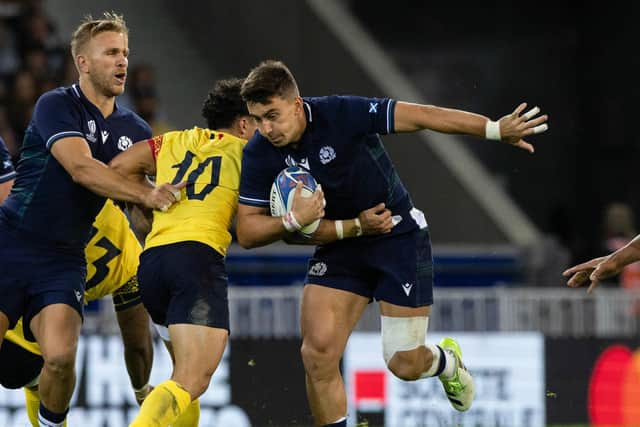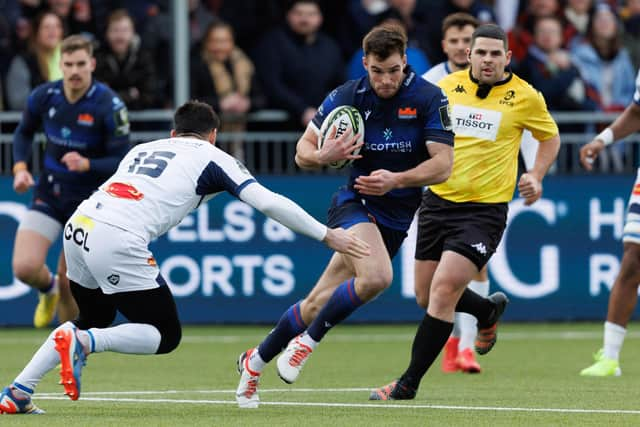Scotland are in fine fettle for 2024 - just look at our options across the pitch
Some 40 years ago, Andy Irvine remarked that while Scotland could match – even defeat – any other country, a second Scotland XV would generally lose to most of our rivals and a third XV would be defeated by an embarrassing score. Well, this was of course in the amateur days, but it remained the case for a long time. We have always had to run hard to keep pace with others, and this is still the case today. What is different is that our second and even third XVs would be more competitive now than in the past, this perhaps a consequence of what one has often lamented, the concentration of talent in only two professional clubs and the intense competition for game-time.
Consequently there is equally keen competition for every position in the Scotland team. Even though Finn Russell reigns supreme at fly-half, it wouldn’t quite be a matter of ‘abandon hope all is lost’ if he was injured. Ben Healy, Ross Thompson and Adam Hastings – now all but recovered from a succession of injuries – are waiting in the wings.
Advertisement
Hide AdAdvertisement
Hide AdThere are always injuries of course, some of which mean that players in the first reserve camp will be missing – Ollie Smith, Kyle Steyn, Fraser Brown, Jack Dempsey and of course Jonny Gray all at presently out of action. That only Dempsey of these was in the team for our last World Cup match against Ireland doesn’t mean that all these are not likely to be challenging for selection again when fit. Admittedly Brown’s distinguished international career may be over, but only because competition for the No 2 jersey is now so intense with George Turner and Johnny Matthews at Glasgow, Ewan Ashman and Dave Cherry at Edinburgh.


Then look at 12 and 13. Have we ever had such a rich crop there? Sione Tuipolutu and Huw Jones are the men in possession, but challenged by their Glasgow team-mate Stafford McDowall and, more immediately perhaps by Cameron Redpath playing very well outside Finn Russell at Bath. Meanwhile, Matt Currie is Edinburgh’s first-choice at 13, playing so well that Mark Bennett has found himself on the bench. James Lang may never play for Scotland again but he is a key player at 12 for Edinburgh.
We have always been strong at scrum-half, but opinions as to which of Ali Price, Ben White and George Horne should start vary just as they did when Mike Blair, Chris Cusiter and Rory Lawson were in competition. Glasgow have two youngsters, Jamie Dobie and Ben Afshar, both of whom look capable of playing at the highest level.
There is fierce competition at lock. Richie Gray and Grant Gilchrist were the men in possession at the World Cup, but both will be challenged by the experienced Jonny Gray, when fit again, and Scott Cummings. Glen Young, originally from Jedforest, has been in tremendous form for Edinburgh. At 29 he may be a late developer, though he has English Premiership experience with Newcastle and Harlequins, and locks often enjoy long careers. Then there is Glasgow’s very young (and tall) Alex Samuel, one surely for the not so distant future.
We are strong in the back row as we usually have been, but here too there are challenges from very young players, notably the Glasgow openside Connor Boyle. Another comparatively late developer, Glasgow’s Ally Miller, committed to the 15-aside game after experience with the Scotland Sevens, has been mighty impressive, his try against Bayonne when he skinned their left wing on the outside being as fine as any one has seen this season.


Two Edinburgh youngsters have already made their mark, full-back or wing Harry Paterson and fly-half Cammy Scott. Despite the lamentable record of our under-20 side in recent seasons, good players are coming through, others being the hooker Corey Tait and flanker Gregor Brown.
Of course we look for an improvement at age-group rugby, especially the under-20 side, but while we very much need an improvement in our youth development programme, two things are worth remarking. First, our under-20 team is selected from a small crop, smaller than in other 6 Nations countries except perhaps Italy; second that international careers now mostly last a long time, ten years, even 15. You can develop a strong Scotland squad. Even if only two or three youngsters of top level international quality emerge from any given year, this may be enough to contribute to years of future success.